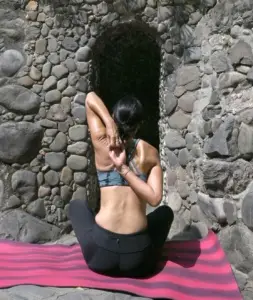
Mindfulness provides powerful tools for managing stress and anxiety by combining physical postures, breathing techniques, and meditation practices. These practices help calm the mind, reduce tension in the body, and promote relaxation. Mindfulness encourages a holistic approach to well-being, addressing both the physical and mental aspects of stress and anxiety management.
Benefits of Stress and Anxiety Therapy:
Considerations before Starting:
Mindful Poses and Practices for Stress and Anxiety:
Breathing Exercises for Stress and Anxiety:
Mindful Practice for Stress and Anxiety:
Summary with Tips:
Mindfulness for stress and anxiety offers a holistic approach to managing these common challenges, fostering relaxation, and promoting overall well-being. By incorporating gentle mindful poses, breathing exercises, and relaxation techniques into your daily routine, you can effectively reduce stress levels, alleviate anxiety, and cultivate a greater sense of calmness and inner peace.

GoInwards is an IRS 501(c)(3) Non-Governmental Organization (NGO), chartered to advance wellness through integrative health related awareness, prevention, intervention, and resilience-based educational programs.
FEIN 90-0609802